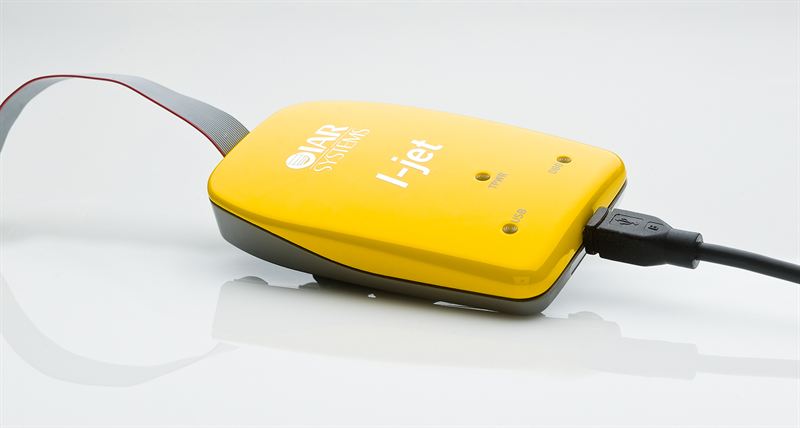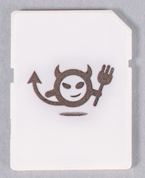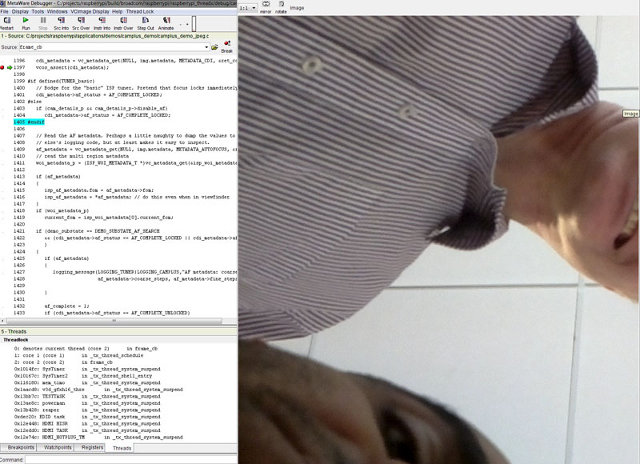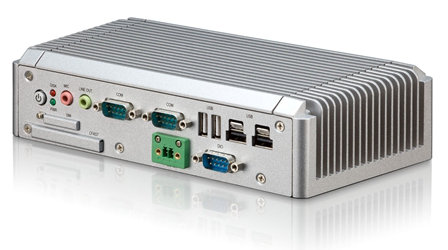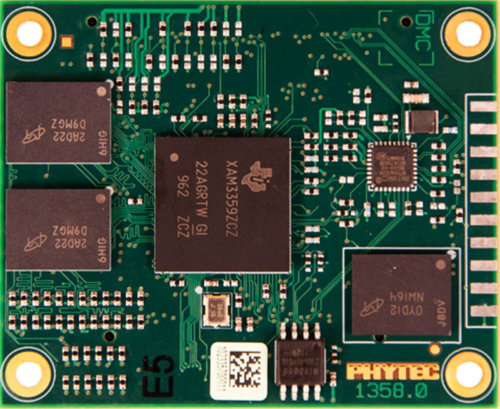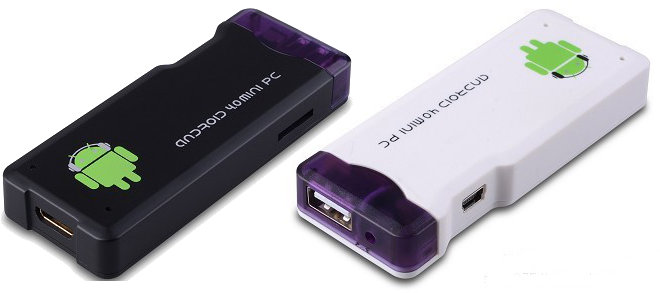IAR Systems has announced the availability of I-jet, a new in-circuit debugging probe that can be used in conjunction with Embedded Workbench for ARM, IAR C/C++ compiler and debugger tool suite. I-jet provides download speeds of up to 1 MB per second, JTAG and Serial Wire Debug (SWD) clocking at up to 32 MHz (no limit on the MCU clock speed), and Serial Wire Output (SWO) frequencies of up to 60 MHz. I-jet probe is powered by USB and can also power the target board (Up to 400mA) and measure the power consumption accuratly (200 uA @ 200khz). The probe is plug-and-play, and supports automatic core recognition, and direct download into the flash memory. I-Jet supports ARM7, ARM9, ARM11, ARM Cortex-M, ARM Cortex-R4, and ARM Cortex-A5/A8/A9 cores. Serial Wire Viewer (SWV), Embedded Trace Buffer (ETB) and JTAG adaptive clocking are supported and all JTAG signals can be monitored. The probe […]
Linux 3.4 Release
Linus Torvalds has just announced the release of Linux Kernel 3.4 on the 20th of May: I just pushed out the 3.4 release. Nothing really exciting happened since -rc7, although the workaround for a linker bug on x86 is larger than I’d have liked at this stage, and sticks out like a sore thumb in the diffstat. That said, it’s not like even that patch was really all that scary. In fact, I think the 3.4 release cycle as a whole has been fairly calm. Sure, I always wish for the -rc’s to calm down more quickly than they ever seem to do, but I think on the whole we didn’t have any big disruptive events, which is just how I like it. Let’s hope the 3.5 merge window is a calm one too. Linus Linux 3.3 merged Android drivers to mainline, added further improvements to btrfs and ext-4 file […]
25 USD Hacker Friendly Electric Imp “WiFi-ises” Your Coffee Machine
Electric Imp is a device in an SD card form factor that aims at providing Wi-Fi connectivity to household appliances at low cost and bringing the Internet of Things (IoT) closer to reality. The Imp will also connect to a Cloud service handled by the company (which is also called Electric Imp). The device Wi-Fi connection can easily be configured using an iOS or Android smartphone thanks to BlinkUp, a patent-pending scheme supporting WEP, WPA and WPA2 encryption schemes as well as WPS setup. Electric Imp developers expect this device to save resources (e.g. electricity) by taking into account environmental conditions (e.g. occupancy, temperature..), improve security & safety and overall provide better monitoring and control of devices. For example, this could enable support services to remotely diagnose a device, and provide timely customer support. Here are the Electric Imp hardware specifications: ST Micro STM32 Cortex M3 MCU 802.11b/g/n WiFi 6 […]
Raspberry Pi Camera Module Up and Running. Retail Version Coming Soon
The Raspberry Pi foundation is working on a camera module for the Raspberry Pi board and today they showed the very first picture taken with the “PiCam” module. The picture below has been taken with a camera module connected via the MIPI CSI-2 interface of the Raspberry Pi. On another subject, if you look closely at the top left of the picture, you can see the Raspberry Pi foundation (and probably Broadcom) uses Synopsys MetaWare Debugger (and Compiler?) to work on the software and fix bugs. Maybe more on that later… The camera module used supports up to 14 Mpixel resolution, but the final module will most probably have a 5MP resolution in order to make it cheaper. The mechanical design is not complete and the foundation does not have a price for the camera module yet. You can see what the 14MP camera module looks like (it’s basically a […]
Getting Ubuntu armel/armhf Rootfs in Ubuntu 12.04
I’ve recently upgraded to Ubuntu 12.04 and this is a great operating system. However, if you do some arm development and expect to be able to install cross libraries (armel/armhf) or easily generate an arm rootfs using the tools you’ve been used to, you’ll be disappointed. In Ubuntu 11.10 (Oneiric), I used xapt and dpkg-cross to retrieve armel libraries, but it’s broken for Ubuntu 12.04, at least on my system. I’ve been told to switch to multiarch because this will be how it’s done from now on. But I soon discovered this is work in progress as quite a few packages are not multiarched yet including python. Ubuntu developers also decided to remove rootstock (which makes sense since xapt/dpkg-cross will be deprecated), so if you want to generate a rootfs the “gool ol’” way (which won’t be supported much longer), you’d have to install an Oneric chroot to run rootstock, […]
VIA Technologies Announces VIA AMOS-3002 System For Embedded Applications
VIA Technologies has just unveiled the VIA AMOS-3002, a fanless system based on VIA EPIA-P900 Pico-ITX board, targeting embedded applications such as telematics, in-vehicle control, machine to machine controller (M2M), digital signage and kiosks. The VIA EPIA-P900 Pico-ITX board is powered by VIA Eden X2 dual core processor (1GHz) together with VIA VX900H media system processor (MSP) and VIA Chrome 9 video processor which render VIA AMOS-3002 systems capable of handling hardware video decoding for MPEG-2, WMV9 and H.264 codecs at 1080p resolution. Two models are available: AMOS-3002-2D10A1 and AMOS-3002-2D10A1. The latter features a 2.5” SATA hard disk drive bay which is not available in AMOS-3002-2D101A1. Here are the specifications for both VIA AMOS-3002 Models: CPU – VIA Eden X2 @ 1.0GHz Chipset – VIA VX900H Media System Processor Memory – 1x DDR3 1066 204-pin SODIMM socket (Up to 4GB) Storage: 1x CFast Flash disk socket 1 x 2.5” SATA hard […]
Phytec phyCORE-AM335x System on Module (SOM) Based on TI Sitara AM335x
PHYTEC announced the phyCORE-AM335x System on Module (SOM) powered by Texas Instruments Sitara AM335x Cortex-A8 processor clocked at 720Mhz and PowerVR SGX530 GPU. This SoM targets industrial applications and supports standards such as EtherCAT, Ethernet/IP, PROFINET, PROFIBUS, POWERLINK, SERCOS-III and CANopen. Here are phyCORE-AM335x SOM specifications: TI’s Sitara AM335x ARM Cortex-A8 processors @ 720 MHz (AM3352, AM3354, AM3356, AM3357, AM3358 and AM3359) PowerVR SGX530 Graphics (AM3359, AM3358, AM3354 only) 512 MB DDR3, 512MB/1GB NAND, 8 MB SPI Flash, 32 KB EEPROM 6x UARTs, 3x I2C, 2x McASP, 2x SPI, 2x CAN 2x USB OTG 2x 10/100/1G Ethernet (Gigabit PHY on carrier board) 24 bpp TTL or LVDS 44 x 50 mm form factor -40 degrees to +85 degrees C temperature range Linux, Compact 7, Android The phyCORE-AM335x SOM will be available in a PHYTEC Rapid Development Kit (RDK) including: phyCore-AM335x SOM A carrier board Board support packages (BSP) Demo images […]
74 USD AllWinner A10 Android 4.0 Mini PC
A cheap white brand Android 4.0 USB/HDMI Stick based on AllWinner A10 has started to show up in Chinese websites. Initially, I thought it was like a low cost version of FXI Tech Cotton Candy (which will start shipping this month), but as you can see in the image below, the HDMI port is female so you’d still need a HDMI cable. The hole next to the USB port should be for the power supply, so this device is apparently not powered via USB (TBC). Connect a wireless mouse and keyboard to the device, the power supply, and an HDMI cable to your TV, and you’ve got yourself a cheap PC running Android 4.0. Since this is based on AllWinner A10, you could also insert a microSD card with Ubuntu, Debian or your other favorite Linux distribution and have yourself a Linux PC. Here are the specifications of the device […]


